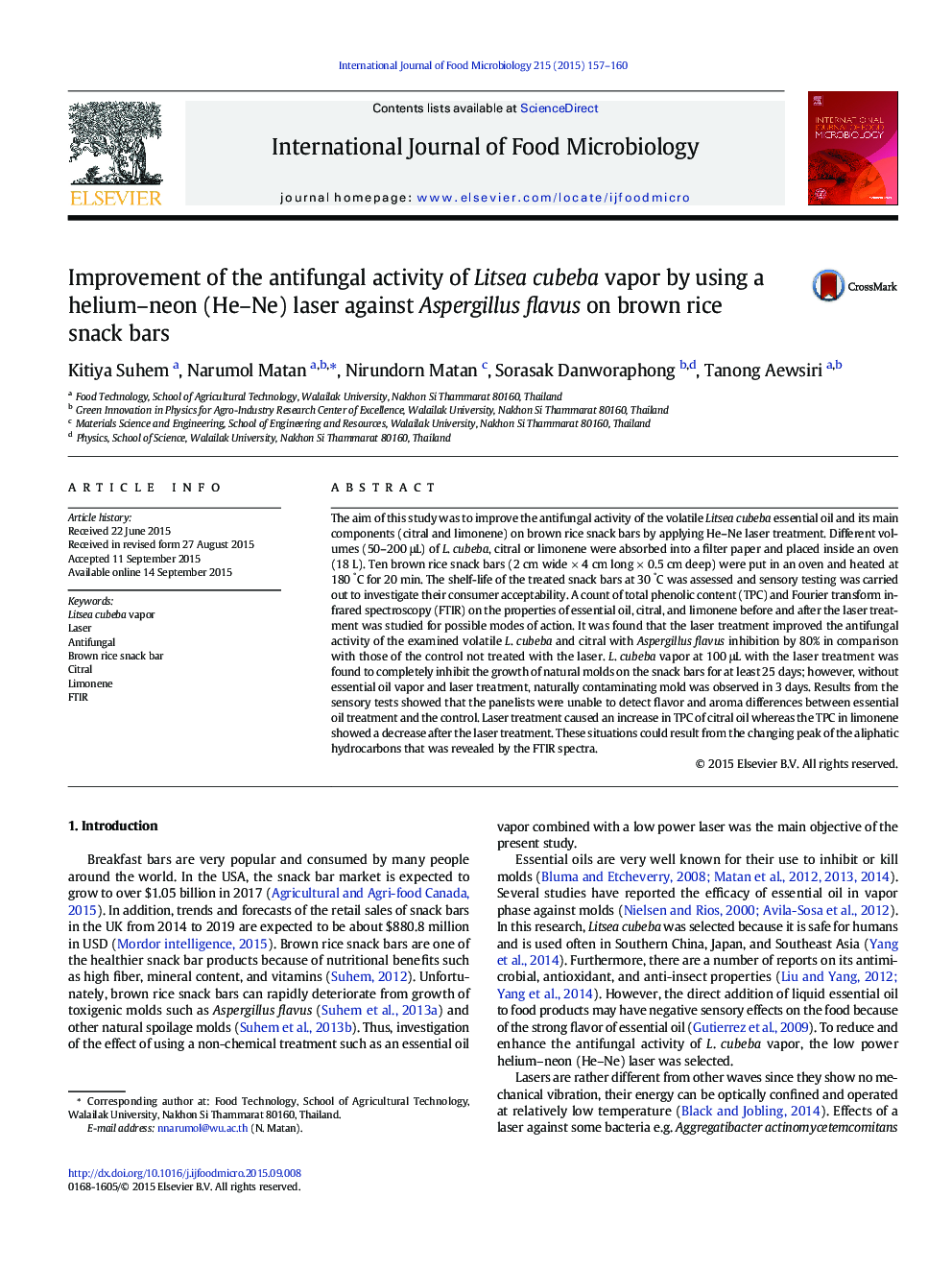| کد مقاله | کد نشریه | سال انتشار | مقاله انگلیسی | نسخه تمام متن |
|---|---|---|---|---|
| 6289849 | 1616568 | 2015 | 4 صفحه PDF | دانلود رایگان |
عنوان انگلیسی مقاله ISI
Improvement of the antifungal activity of Litsea cubeba vapor by using a helium-neon (He-Ne) laser against Aspergillus flavus on brown rice snack bars
دانلود مقاله + سفارش ترجمه
دانلود مقاله ISI انگلیسی
رایگان برای ایرانیان
کلمات کلیدی
موضوعات مرتبط
علوم زیستی و بیوفناوری
علوم کشاورزی و بیولوژیک
دانش تغذیه
پیش نمایش صفحه اول مقاله

چکیده انگلیسی
The aim of this study was to improve the antifungal activity of the volatile Litsea cubeba essential oil and its main components (citral and limonene) on brown rice snack bars by applying He-Ne laser treatment. Different volumes (50-200 μL) of L. cubeba, citral or limonene were absorbed into a filter paper and placed inside an oven (18 L). Ten brown rice snack bars (2 cm wide Ã 4 cm long Ã 0.5 cm deep) were put in an oven and heated at 180 °C for 20 min. The shelf-life of the treated snack bars at 30 °C was assessed and sensory testing was carried out to investigate their consumer acceptability. A count of total phenolic content (TPC) and Fourier transform infrared spectroscopy (FTIR) on the properties of essential oil, citral, and limonene before and after the laser treatment was studied for possible modes of action. It was found that the laser treatment improved the antifungal activity of the examined volatile L. cubeba and citral with Aspergillus flavus inhibition by 80% in comparison with those of the control not treated with the laser. L. cubeba vapor at 100 μL with the laser treatment was found to completely inhibit the growth of natural molds on the snack bars for at least 25 days; however, without essential oil vapor and laser treatment, naturally contaminating mold was observed in 3 days. Results from the sensory tests showed that the panelists were unable to detect flavor and aroma differences between essential oil treatment and the control. Laser treatment caused an increase in TPC of citral oil whereas the TPC in limonene showed a decrease after the laser treatment. These situations could result from the changing peak of the aliphatic hydrocarbons that was revealed by the FTIR spectra.
ناشر
Database: Elsevier - ScienceDirect (ساینس دایرکت)
Journal: International Journal of Food Microbiology - Volume 215, 23 December 2015, Pages 157-160
Journal: International Journal of Food Microbiology - Volume 215, 23 December 2015, Pages 157-160
نویسندگان
Kitiya Suhem, Narumol Matan, Nirundorn Matan, Sorasak Danworaphong, Tanong Aewsiri,